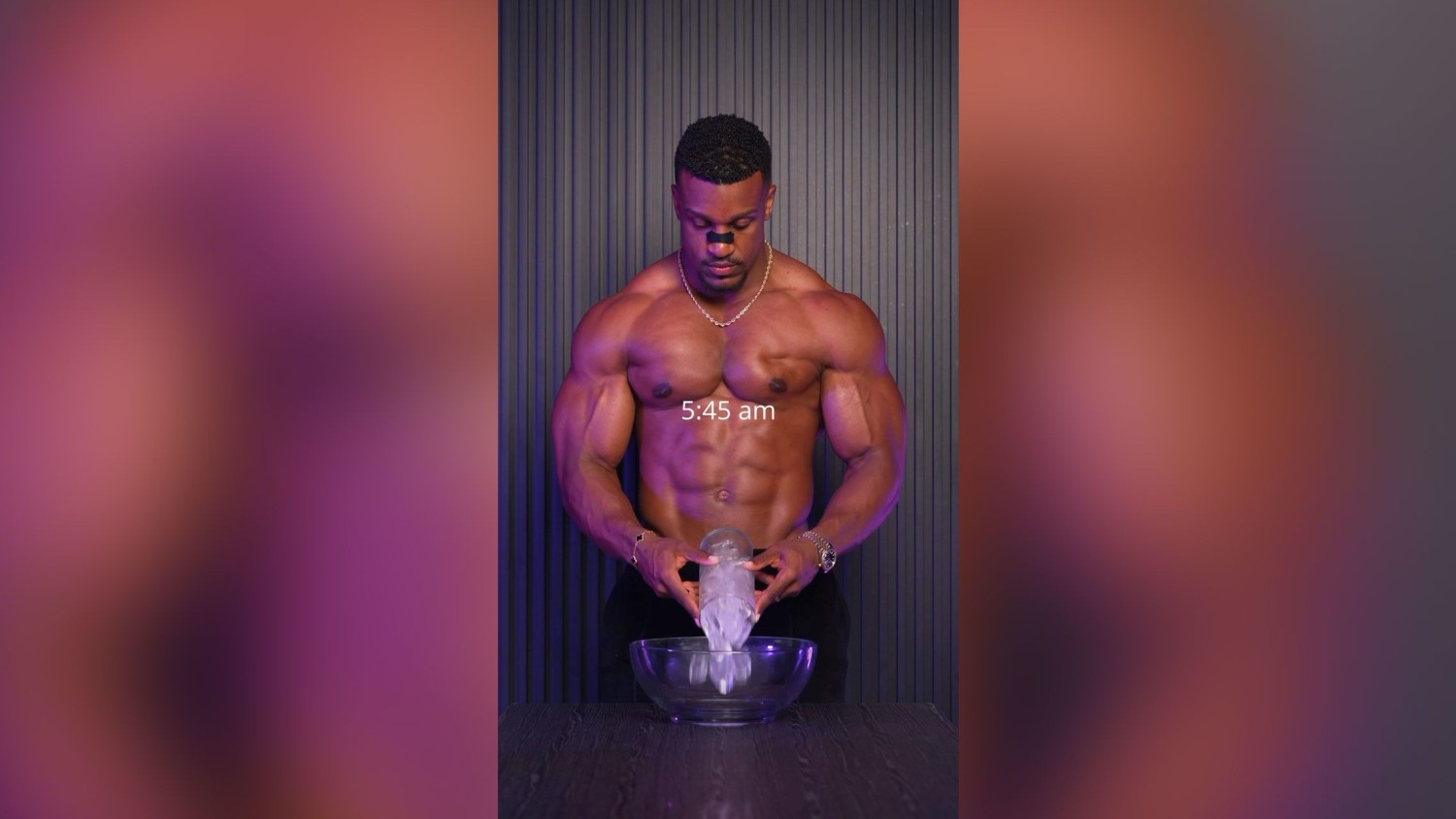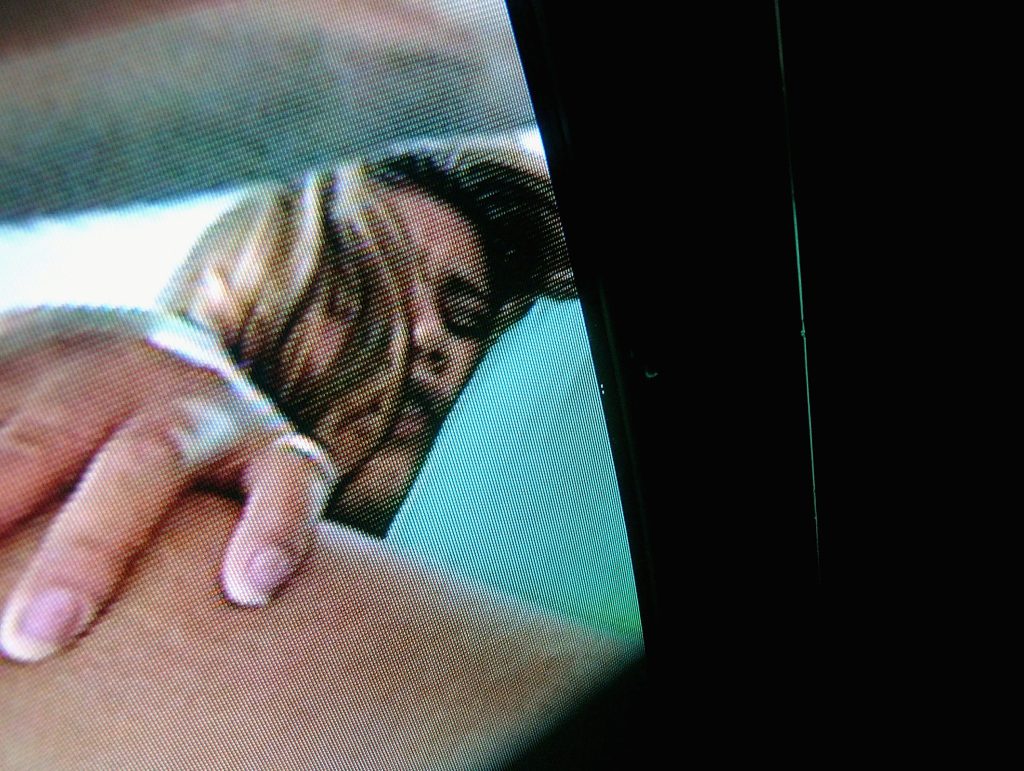
This article is more than
1 year oldWhy is Florida 'breaking up' with spring break?
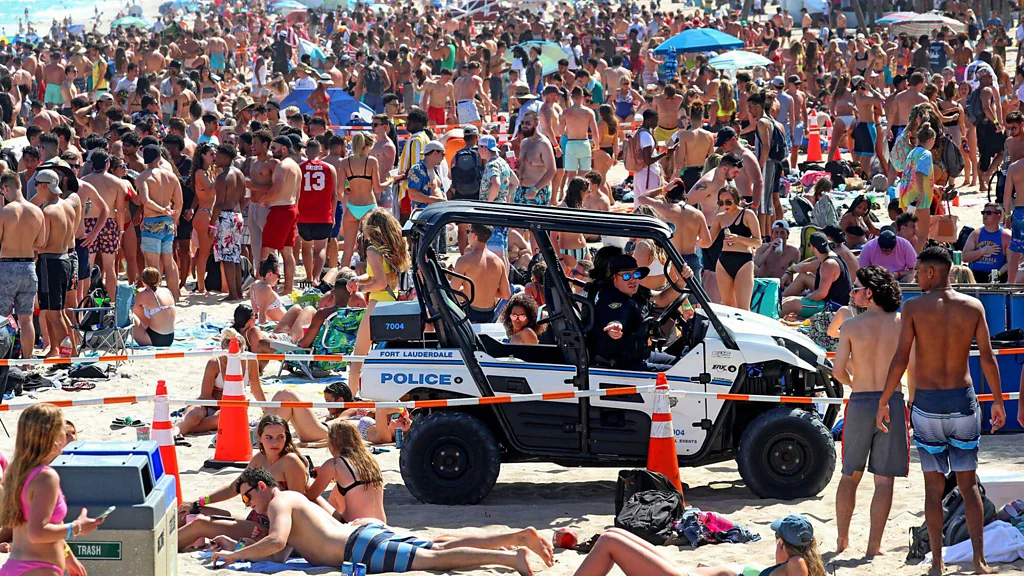
It's the season for raucous rites of spring revelry in the US state of Florida. But spring break may be getting toned down this year in the state that birthed the popular American pastime, if local crackdowns have anything to do with it.
Traditionally, spring break – a week-long period when many American universities close and students descend on warm-weather beaches across the US to relax and party – falls between late February to mid-April. But former Fort Lauderdale resident Mike Houser said signs of the bacchanalian event's arrival in the beach town just north of Miami began to materialise by the third week of February this year. Bare-chested and bikini-clad they come, clutching insulated cups of frosty libations and rolling like tumbleweeds down the city's sandy stretches and city streets.
"The beaches are already packed, the restaurants. Everywhere is slammed," said Houser, who recently moved to Tampa. "I don't live near the beach but I noticed it first at my local Publix," he said, referring to the Florida-based supermarket chain. "From 09:00 to 22:00 at night, it's kids going in there buying cases of White Claw."
Along the beach in Fort Lauderdale and the oceanfront road lined with restaurants, bars and hotels, steel barricades have been in place since late February in an effort by the city to manage crowds that will number into the thousands between 8-17 March, when spring break crowds are expected to reach their peak here. One local bar and restaurant, The Wharf, is increasing the age limit to enter from 21 to 23 for out-of-state visitors during the entire month of March, the restaurant confirmed.

After years of tolerating drunken debauchery, many Florida cities are now cracking down on spring breakers (Credit: Alamy)
Fort Lauderdale's average temperatures are around 80F (27C) in March, with ocean temperatures in the balmy low to mid-70s (21-24C). As such, students flock to the city from all over the country to let loose in the sun and surf. They descend on spots like Elbo Room, a famous dive bar with ocean views (and a recent Facebook post claiming, "Hold on to your socks, because the next three months will be a wild ride of beaches, booze and bikinis"), and Blondies Sports Bar, where happy hour runs all day.
And with five weekends in March this year, spring break is just getting started.
The history of spring break
Spring break's origins in the US go back to 1934, when Sam Ingram, a swimming coach from New York's Colgate University, decided his team needed a winter warmup and travelled with them to South Florida to train in the more favourable setting of the Las Olas Casino Pool (now the Fort Lauderdale Aquatic Center).
"They found it so agreeable that they started an annual swim meet, the Collegiate Aquatic Forum," explained travel writer Thomas Swick, who has lived in Fort Lauderdale since 1989. "People who came to it inevitably returned to campus and spread the word about the warm weather and beautiful beaches, and the secret was out."
Yet, it wasn't until Glendon Swarthout's 1958 novel Unholy Spring (later changed to Where the Boys Are) that things really took off. An English professor at Michigan State University, Swarthout followed a group of students down to Fort Lauderdale over their Easter break so he could observe the debaucherous rituals he'd heard about – think pool-hopping, beer-chugging and plenty of hooking up (then called "playing house"). The book inspired a film two years later, effectively cementing Fort Lauderdale as a spring break magnet, with the Elbo Room (featured in the movie) as its unofficial headquarters.
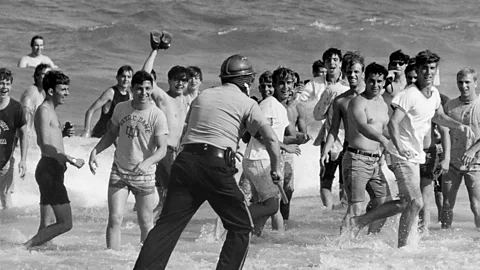
By the mid-'80s, Fort Lauderdale became known as "Fort Liquordale" and the city began encouraging partiers to head elsewhere (Credit: Alamy)
Within a few years, the number of college students descending on Fort Lauderdale went from 20,000 to 50,000, and local bars began offering cheap all-you-can-drink specials, leading the city to earn the nickname "Fort Liquordale". By the mid-'80s, as many as 350,000 students flooded into the 145,000-person city, leading the mayor to pass tougher drinking laws and encourage partiers to head elsewhere.
"There's a kind of nostalgia for spring break I think, at least among those of us who never saw its dark side, as it's an essential part – for better or worse – of the city's history and culture," Swick said.
The spread of spring break – and the backlash
With some 1,800 miles of coastline, Florida hardly wants for sandy real estate to welcome a springtime bacchanal. Nearly any beach in the state is bound to attract spring breakers, but some stretches are markedly rowdier than others.
Today, the revelry spreads far beyond South Florida hot spots like Fort Lauderdale and Miami to destinations across the state, from Key West in its southernmost reaches to Clearwater Beach on the Gulf Coast. Daytona Beach began attracting spring breakers in the 1980s, after Fort Lauderdale had had enough of students' "balcony-diving" antics.
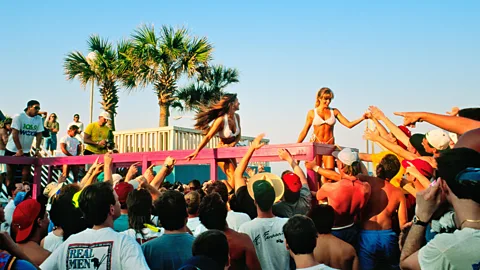
By 1989, Daytona Beach was attracting more than 500,000 spring break revellers (Credit: Alamy)
Spurred on by MTV-induced debauchery, in 1989, Daytona Beach saw more than half a million revellers party in the city during spring break. This led to some students falling off hotel balconies, being drunk and disorderly and generally causing gridlock everywhere. By the 1990s and early 2000s, Panama City Beach in north-west Florida had become a spring break party hub, too, thanks to TV specials like MTV Spring Break: Panama City Beach (1996). In recent years, the city has been pushing a more family-friendly image, in hopes of disassociating it from its reputation as a party destination.
Yet, Florida is hardly the only spring break destination for college kids in the US. Tour operators like STS Travel and Student Escape hawk trips to other popular spots including Cabo San Lucas and Cancun in Mexico and Nassau and Freeport in the Bahamas. Texas' South Padre Island, Orlando, Las Vegas and New Orleans are also popular spring break destinations.
Some Florida destinations, however, are saying enough is enough.
Alcohol consumption is now banned on the beaches in Fort Lauderdale and law enforcement will be circulating on horseback, bikes, ATVS and in cars during spring break this year, deploying uniformed and undercover officers to patrol things like open container violations and underage drinking. The Fort Lauderdale Fire Department is also providing Narcan, a medicine used to help with opioid overdoses, to hotels and lifeguards this year as a preventative measure.
Florida's governor, Ron DeSantis, , said 17 local law enforcement agencies from across the state had requested state assistance over the spring break period, with 60 state troopers bound for South Florida, predominantly Miami Beach.

Miami and other Florida cities have been cracking down on rowdy spring break behaviour (Credit: Alamy)
In fact, Miami Beach is sending a very clear message this year that the city is no longer a place for criminal activity and raucous behaviour with its new Miami Beach is Breaking Up with Spring Break campaign.
"Fed up with lawless behaviour and a string of violent acts in recent years, city leaders are implementing tough new measures aimed at putting an end to spring break," said Melissa Berthier, director of marketing and communications for the City of Miami Beach. "These include restricted beach access and bag checks, parking garage closures, DUI checkpoints, licence plate reader details, and heightened police enforcement for consumption of alcohol in public, drug possession and violent behaviour."
More like this:
- The Overseas Highway: The US' 'floating' highway
- Gavdos: The European island known for nudity
- Is this the summer of bad tourists?
With targeted digital advertising being deployed throughout Florida as well as in drive-in and national fly-in markets, the Spring Break Break Up campaign is in response to events of recent years, Berthier said.
Two people were killed during separate shootings in Miami Beach in March 2023. And between 27 February and 2 April 2023, there were 573 arrests made, Berthier said, calling the arrests a "huge and costly stress on city resources".
"We hope this campaign will dissuade unruly crowds from coming to Miami Beach during this time," she said. "There may be trade-offs, but we cannot tolerate another year like the last few."
Join more than three million BBC Travel fans by liking us on Facebook, or follow us on Twitter and Instagram.
If you liked this story, sign up for The Essential List newsletter – a handpicked selection of features, videos and can't-miss news delivered to your inbox every Friday.

